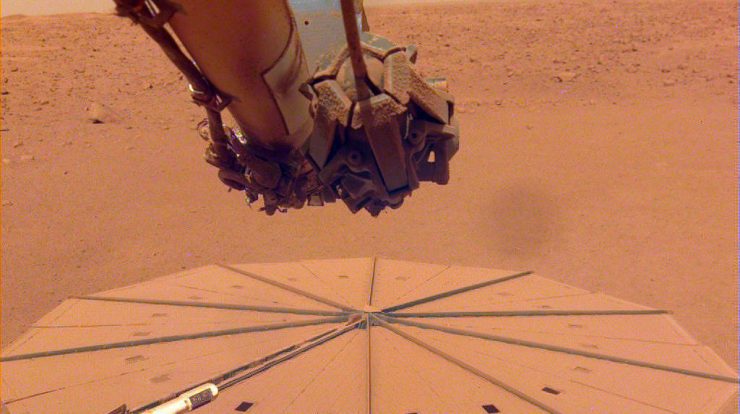
Most of the seismic activity is detected in Mars Through the InSight mission it shows that the Red Planet is “not dead” as it might seem, moving like Earth or Venus.
Images of the desolate surface of Mars, obtained by the spacecraft for this mission NASA Misleading because even though “the planet’s main volcanic activity dates back 3.5 billion years, it is not dead,” says Clement Perrin, a physicist at the Laboratory of Planetary and Earth Sciences at the University of Nantes, in France.
In fact, Mars is quite alive judging by the periodic tremors recorded since February 2019 by the InSight mission. The seismometer, a high-resolution instrument developed by the French National Center for Space Studies (CNES), is located more than 1,200 kilometers from Cerberus Fossae.
This is one of the “newest regions of Mars, about 10 million years old,” that “has open fractures, linked to volcanic activity,” explains Perrin, co-author of the study by Simon Stahler, of the Polytechnic School of Zurich and published in the journal Nature.
These trenches, “real canyons several hundred kilometers long, up to one kilometer wide and one kilometer deep,” are of interest to researchers for several reasons. A recent geological study, with the help of images taken by a probe in the orbit of Mars, showed traces of volcanic activity from 50,000 to 200,000 years ago. According to Perrin, this is something “very recent, which we can have with the inactive volcanoes of France”.
Questions about magma
The InSight mission She brings a new look into this data, as well as confirmation by her seismic study that the planet is largely alive, although we don’t see any active volcanoes.
“Before going to Mars with InSight, we thought it was a little at the end of its life, with a dormant core,” the physicist says. The researchers expected to find a planet that was shaken by “small earthquakes coming from all sides,” indicating that it is slowly shrinking as the Earth cools, as the Earth does today. the moon or Mercury.
But the InSight seismometer recorded something else entirely, “mostly a source that shows internal activity on the planet.” The instrument detected earthquakes in the Cerberus Fosai region that scientists attribute to the rotation of magma, from molten rock, in the crust of Mars at depths of 15 to 50 km.
“Although we still have a lot to learn, the evidence for possible magma on Mars is intriguing,” said Anna Mittelholz, a postdoctoral researcher at the Polytechnic School of Lausanne (Switzerland), citing the university.
Stehler, for his part, wonders if “what we’re seeing are the last traces of activity in a previously volcanic region or if magma is moving eastward and a new eruption zone.”
To get to the answer, it will be necessary to quickly replace the InSight mission, whose seismometer is expected to stop working in the coming months. Dust-covered solar panels will not produce enough electricity to power them.

“Web geek. Wannabe thinker. Reader. Freelance travel evangelist. Pop culture aficionado. Certified music scholar.”




